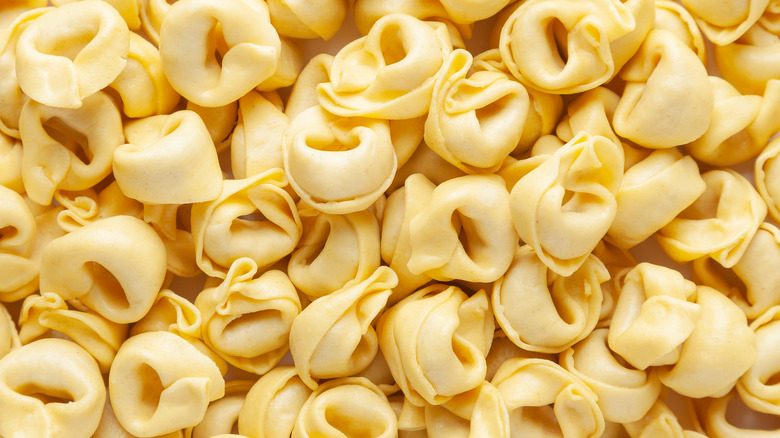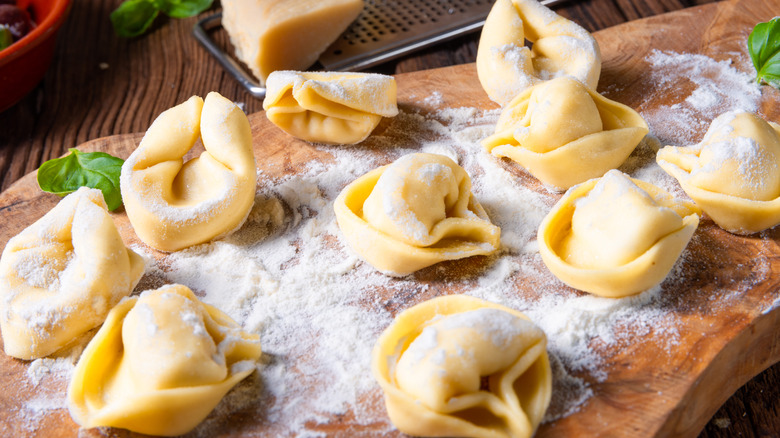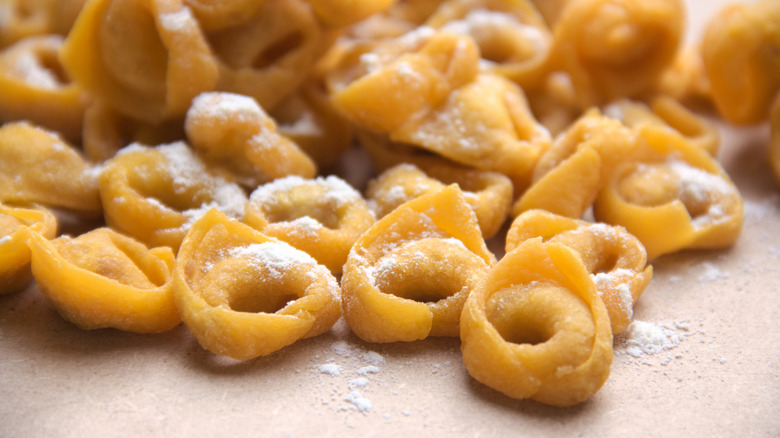Forget What You Know About Tortellini, And Fry Them Like The Dumplings They Are
Tortellini is a an undeniably rich dish. This cheese- or meat-filled pasta is often paired with a heavy, cream-based sauce — though tortellini can sometimes be tossed in tomato sauce as well. These unique pasta pockets were born in Italy's Bologna region, and while they're synonymous with Italian cuisine, they have certainly found their place in the United States.
But what exactly is tortellini? It goes beyond the standard definition of pasta — made with wheat flour, water, and eggs. Tortellini is essentially a stuffed dough pocket, which begs the question: Does it qualify as pasta at all? Sure, since it involves the same ingredients. But it actually can also be considered a dumpling. By definition, dumplings are masses of dough (often stuffed) that are cooked by either steaming, frying, or boiling.
Tortellini are, therefore, simply dumplings hiding behind a pasta façade. And if you've never pan-fried fresh tortellini like their dumpling relatives — by frying and steaming them in a pan — it's about time to try it.
Tortellini deserve to be pan-fried
If you've ever had a dumpling, you're likely know it for its soft, doughy texture with at least one side that's been crisped in a pan. This cooking technique is called pan-frying, and it's simply the process of frying the dumpling in a pan with a shallow amount of oil; you can fry one side, then cover the pan and add a bit of water to allow the other parts of the dough to cook via steaming. You can certainly fry all sides of the dough in a pan, too, but frying one side gives the dough two different textures, adding to the overall experience.
Next time you're considering boiling tortellini, try pan-frying it instead. After all, it's a dumpling, right? It's easiest to use fresh tortellini (or, you can boil packaged tortellini, then finish them in a pan). Simply add a small amount of oil to a pan. Cook one side of the tortellini in oil, then cover the pan, add a bit of water, and allow the other side of the tortellini to steam, cooking the dough and filling without frying it all around. The tortellini will pan-fry in four to eight minutes, and the key to knowing when they're done is to look for that golden crisp. Changing up that texture will add a whole new element to this dumpling pasta.
Can you freeze pan-fried tortellini?
If you try this tortellini trick and love it but can't eat it all in one sitting, don't worry — you can absolutely freeze pan-fried tortellini. The key to freezing any fried food is to make sure it cools completely before storing it. Also, if you're unsure that you'll need all of the tortellini, avoid adding it to the remainder of the recipe, including the sauce, in case there are elements in the whole dish that don't freeze well. Rather, freeze the tortellini on its own, then heat it and add it to a dish when you're ready to use it. Cooked tortellini will last about three months in the freezer. You can also freeze fresh, uncooked tortellini as well, which will remain at their best quality for up to two months into freezing. The tortellini will still be safe to eat, but its flavor and texture might start to change.


